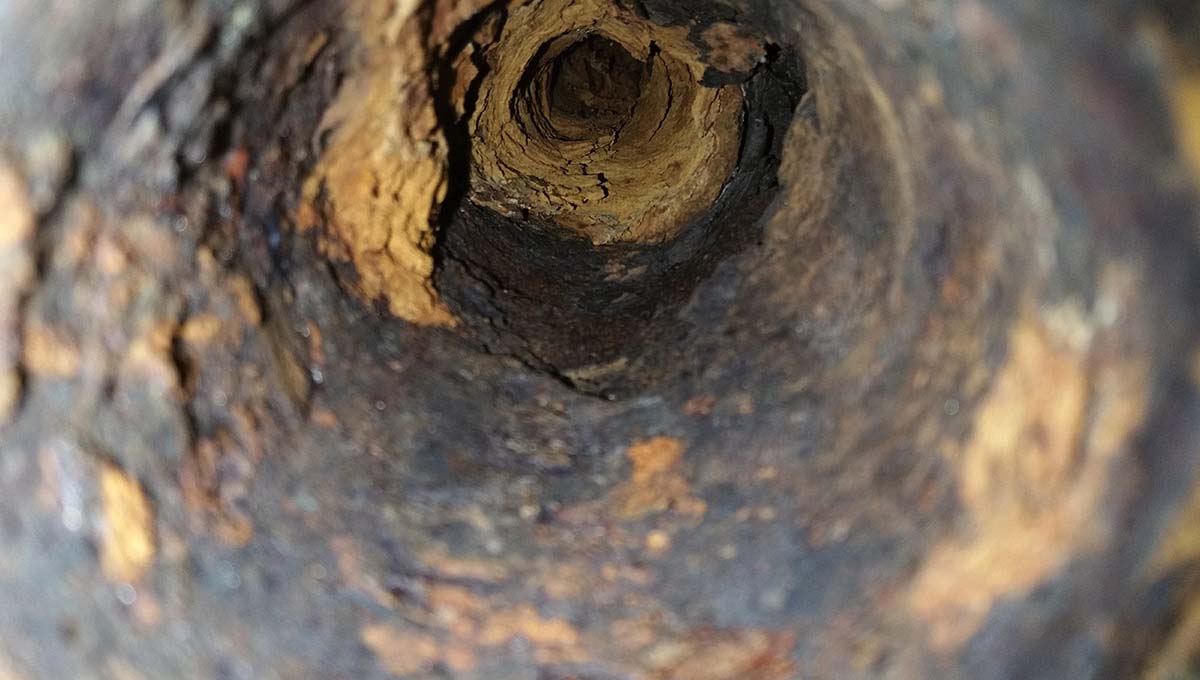7 Ways To Prevent A Sewer Backup
Sewer backups can be a significant inconvenience and a potential health hazard for homeowners. They can occur for various reasons, including blockages in the sewer lines, grease build-up, and root infiltration. If you’re tired of dealing with sewer backups, it’s time to take action and prevent them from happening in the first place.
This article will share seven ways to prevent and treat a sewer backup in your home. Following these tips, you can keep your plumbing system functioning properly and reduce the risk of a sewer backup. So, if you want to know how to prevent and treat a sewer backup in your home, keep reading to learn!
Here are 7 ways to prevent a sewer backup:
7 – Use drain screens.
Drain screens are an effective way to prevent a sewer backup because they catch debris that can accumulate in your pipes and cause blockages. Several types of drain screens are available, including mesh screens, foam filters, and built-in sink strainers.
Mesh screens: Mesh screens are made of a fine mesh material and can be placed over the opening of your sink, shower, or bathtub drain. They effectively catch hair, soap, and other small debris that can otherwise build up in your pipes.
Foam filters: Foam filters are soft and sponge-like and are designed to fit inside your floor drain. They are effective at catching debris but may need to be cleaned or replaced more frequently than mesh screens.
Built-in sink strainers: Built-in sink strainers are a type of drain screen for permanent installation in sinks. They are typically made of hole-patterned or slotted material and are designed to catch debris such as food particles, cold grease, and small objects that can accumulate in your pipes and cause blockages. A built-in sink strainer can prevent a sewer backup by catching debris before entering the pipes, and this can reduce the risk of blockages and keep your plumbing system functioning properly.
To use a built-in sink strainer, install it in the portion of your sink drain that connects the drain to the sink. When the strainer becomes full, remove the basket portion and dispose of debris in the trash. It’s essential to clean the strainer regularly.
Cleaning the type of drain screen you choose is essential to prevent debris from building up and causing a blockage. Drain screens should be placed in all drains in your home, including sinks, showers, and bathtubs, and this will help to prevent a sewer backup and keep your plumbing system functioning properly.
6 – Avoid flushing inappropriate items.
Avoiding flushing inappropriate items down the toilet is vital to prevent sewer blockages. Toilet paper is designed to break down easily and flush smoothly, but other things, such as feminine hygiene products, wipes, and paper towels, break down slowly and can cause blockages in the sewer lines.
When these types of items are flushed down the toilet, they can accumulate in the pipes and create a blockage. This can lead to a sewer backup, which can be a significant inconvenience and a potential health hazard for homeowners.
To prevent sewer blockages, it’s important only to flush toilet paper and human waste down the toilet. Dispose of other items, such as feminine hygiene products, wipes, and paper towels, in the trash to prevent them from causing a blockage in the sewer lines.
If you have small children, installing toddler-safe toilet locks is helpful. This can help reduce a potential drowning hazard and prevent toys from being accidentally flushed, causing significant backups.
5 – Maintain your septic tank (if you have one).
Maintaining your septic tank and regularly pumping is important to prevent sewer backups. A septic tank is a self-contained sewage treatment system commonly used in areas where a traditional sewage treatment plant is unavailable. It consists of a tank where sewage is collected and allowed to decompose naturally and a drain field where the treated sewage is dispersed into the soil.
If a septic tank is not maintained properly, it can become full or malfunction, which can cause sewage to back up into the home. This can be a major health hazard and a major inconvenience for homeowners.
To prevent septic tank backups, it’s essential to have your septic tank regularly pumped and inspected by a professional. The pumping frequency will depend on the size of your septic tank and the amount of sewage it processes, but most tanks should be pumped every 3-5 years.
In addition to having your septic tank pumped, it’s essential to properly maintain it by avoiding flushing inappropriate items down the toilet like wipes, feminine products, and harsh cleaners like bleach, and using water efficiently to prevent the tank from overloading. Taking these precautions can help prevent a sewer backup and keep your septic system functioning properly.
4 – Fix corroded and leaking drains.
Fixing corroded or leaking sewer and drain pipes can help prevent sewer breaks and clogs. Corroded pipes are more prone to cracks and leaks, allowing water to escape and erode the soil around the pipes. This can lead to the pipes collapsing or becoming blocked, which can cause a sewer backup.
Leaking pipes can also contribute to sewer blockages by allowing water to escape and saturate the soil around the pipes. This can lead to the growth of roots, which can invade and block the pipes.
To prevent these problems, fixing any corrosion or leaks in your sewer and drain pipes is essential to do as soon as possible. This can help to prevent breaks, collapses, and blockages and keep your plumbing system functioning properly.
You must call a professional plumber for assistance if you suspect a leak or corrosion in your sewer or drain pipes. They can inspect the pipes with a video scope and recommend the appropriate action to fix the problem and prevent further issues.
3 – Remove grease from your drains.
Several products can help to reduce light grease build-up in drains and sewers. It’s essential, however, to understand that heavy grease build-up will require mechanical removal or piping replacement. Grease removal products are meant as preventative, work slowly over time, and cannot remove clogs.
Enzyme drain cleaners: One type of product for this purpose is an enzyme-based drain cleaner. Enzyme drain cleaners contain naturally-occurring enzymes that break down organic material, including grease, in the pipes.
Bacteria-based cleaners: These products contain beneficial bacteria that consume organic material in the pipes, including grease, and help to prevent blockages.
2 – Use your garbage disposal sparingly.
A garbage disposal can create clogs in sewer pipes if used improperly or if it cannot grind up certain types of food or debris. Here are a few ways that using a garbage disposal can create clogs:
Grinding up large amounts of food: A garbage disposal is not designed to handle large amounts of food at once. If you try to grind up too much food at once, it can overwhelm the disposal and cause a clog in the pipes.
Grinding up fibrous materials: Fibrous materials such as celery, corn husks, and potato peels can be difficult for a garbage disposal to grind up and may cause a clog in the pipes.
Grinding starchy materials: Grinding starchy materials such as potatoes and rice may initially go down the drain, but they absorb water and expand to form solid masses. These kinds of clogs can be difficult to remove, even with professional steel-cabled machines.
In general, the higher the quality of your garbage disposal, the better it will be at grinding up food and debris. Higher-quality disposals are typically equipped with stronger motors and multi-staged grinding, which allow them to grind up food more and reduce the risk of clogs.
However, it’s still important to use your disposal responsibly and avoid grinding up inappropriate items to prevent clogs in your sewer pipes.
1 – Slow down tree root intrusion.
If you have tree root intrusion in your sewer that has not yet broken the piping, there are two products you can purchase that slow the coming sewer collapse. The first is copper sulfate, and the other is Diclobenil.
Copper Sulfate: Copper sulfate is made from copper compounds and sulfuric acid and is environmentally friendly. It is available at home supply centers and can be easily used by pouring it into a toilet closest to the drain.
Copper sulfate takes a few weeks to work and is absorbed by tree roots, killing them without affecting the rest of the tree. However, it is advisable to check with the local sewer district before using copper sulfate, as it may be prohibited in some areas.
There are a few safety considerations to keep in mind when using copper sulfide.
It is toxic to humans and animals: Copper sulfide should be handled with care and only used in areas that are not easily accessible to people or pets.
It is corrosive to certain types of pipes: It is essential to ensure that it is compatible with the materials of the existing sewer that make up the sewer system.
To use copper sulfide properly, follow the instructions provided by the manufacturer.
Diclobenil: The other option for removing roots that cause problems in plumbing systems is a foamy root killer made with the herbicide Diclobenil. When it comes into contact with water, it foams up and is effective in killing roots in sewer lines and septic tanks. It is easy to use and can be poured directly into a toilet. In addition to being used in plumbing systems, you can use it outside to prevent roots from growing in driveways and sidewalks.
To use Diclobenil properly, follow the instructions provided by the manufacturer.





